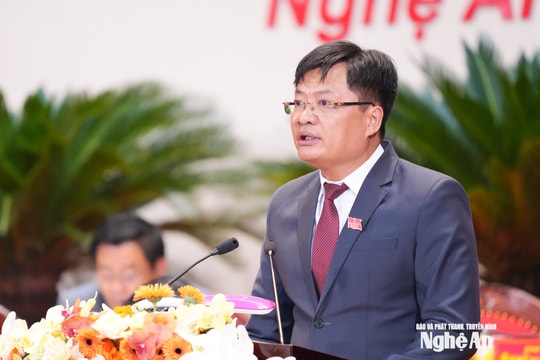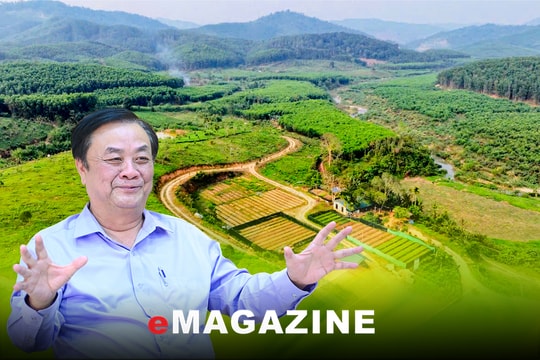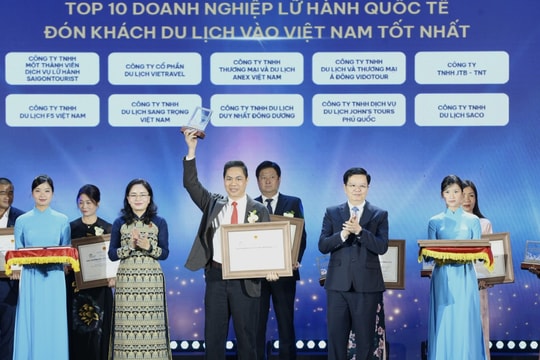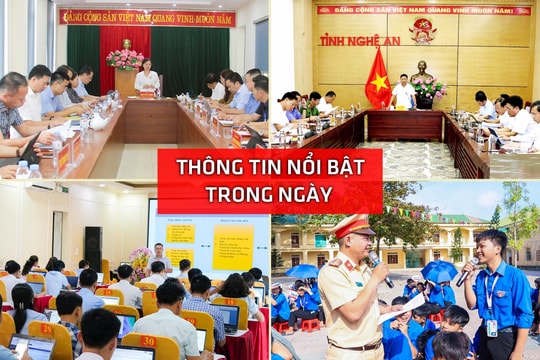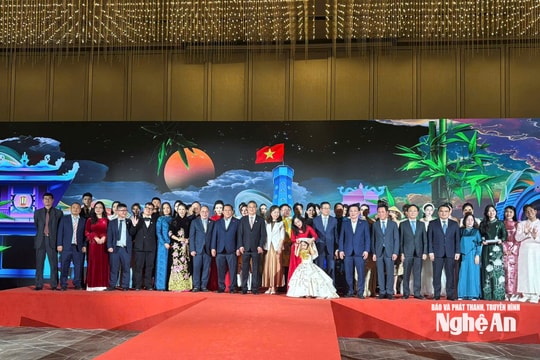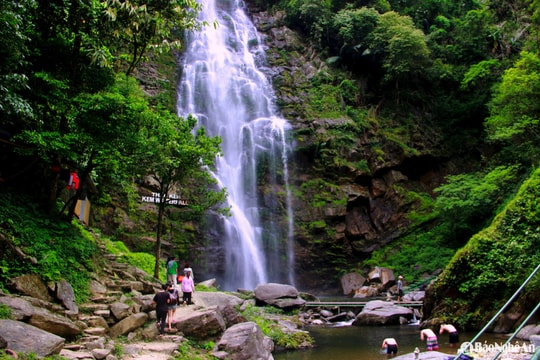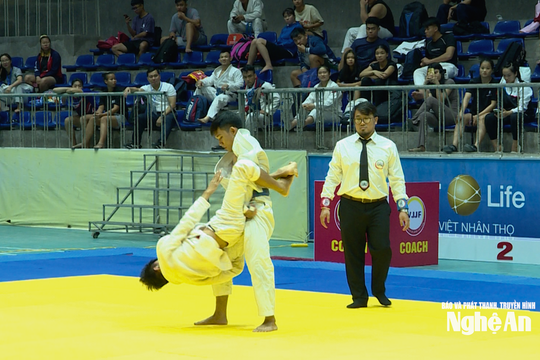Con Cuong: Need to awaken the potential of relics and scenic spots
(Baonghean) - Located in the Southwest of Nghe An, Con Cuong district is known as an ancient land with a rich history and culture with many famous relics and landscapes. However, the exploitation of the value of the system of relics and landscapes to serve the socio-economic development goals of the district is still modest.
A Tra Lan region rich in sediments
About 500 years ago, Trang Bung - Phung Khac Khoan wrote a poem about the Con Cuong land: "The mountains are not high, the water is not deep/ The landscape is painted by someone skillfully". The two verses have sketched the mountains, rivers and waters of a charming countryside, easily captivating the literati. In terms of history and culture, the land of Tra Lan was once associated with the resounding victories of the Tran dynasty and the Lam Son army in the battles against the invading Ming army.
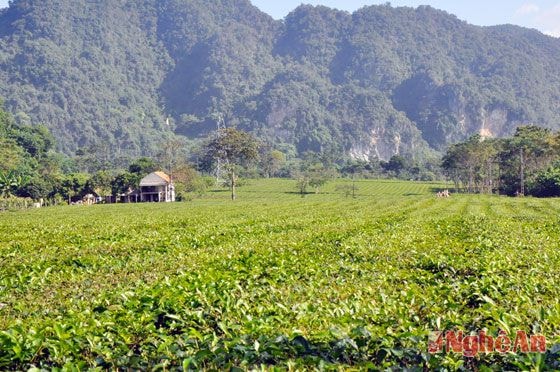 |
| Tea gardens run along the limestone mountains in Bong Khe (Con Cuong) |
Through hundreds of years of ups and downs, changes, those achievements still exist on every mountain, cliff, and riverbank. In other words, Con Cuong land is blessed by nature and history with many relics and famous landscapes.
According to the inventory results conducted by the Provincial Monuments and Landscapes Management Board at the end of October 2015, Con Cuong currently has a total of 41 monuments, landscapes and archaeological sites. These monuments and landscapes are distributed throughout most of the communes in the district, with the most in the communes of Yen Khe, Chi Khe, Bong Khe, Don Phuc, Luc Da and Mon Son.
Among them, there are relics, scenic spots and archaeological sites known to many domestic and foreign tourists such as: Tham Hoi, Tham Nang Man, Ma Nhai stele, Vi Van Khang's house, Pu Mat National Park, Giang River, Nuoc Moc stream... These scenic spots combined with the unique culture, imbued with the identity of the Thai and Dan Lai people residing in the area, are potential for the locality to develop community ecotourism. And in fact, the people of Con Cuong have begun to implement this direction and have achieved certain results.
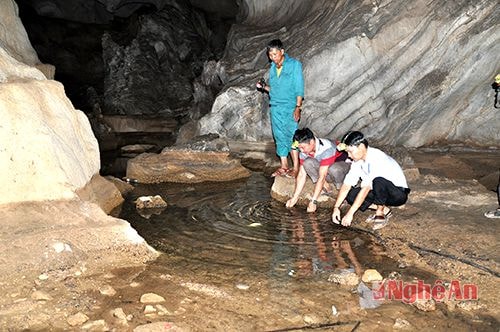 |
| The beauty of Tham Tong - a newly discovered scenic spot in Binh Chuan (Con Cuong). |
Cave cluster
Yen Khe Valley is surrounded by limestone mountains creating a majestic and poetic landscape, with fascinating and attractive caves inviting people and tourists to explore. Recently, in Yen Khe area, more archaeological sites have been discovered: Pha Phang, Tham Quai, Tham Ton and Lo Co cave. All are almost intact with a rich and colorful stalactite system, when tapped, they emit sounds like the sound of wind, bells, and streams.
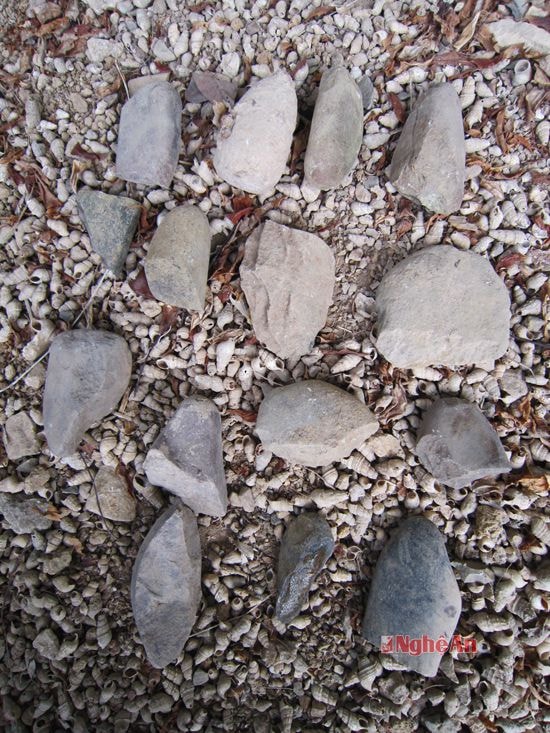 |
| Stone tools of ancient Vietnamese people were found at the Pha Phang archaeological site (Yen Khe - Con Cuong). |
Along with that, fossilized shells, snail shells and stones crafted into tools (crushing, chiseling, grinding) prove that this was once a place of residence for ancient Vietnamese people. That helps Yen Khe become a destination for those who love to explore mountains, caves and have interesting experiences with the beauty created by the hands of nature.
From Yen Khe, passing Bu Ong slope, visitors will set foot on Luc Da land in Muong Qua region, where Thai people live with a long history and cultural features imbued with identity. Besides Khe Kem waterfall (Boc Bo) which is known and praised by many people for its majestic and poetic beauty, this land has recently discovered Noong Tham cave (Noong Mu) and Hoong Nang. Like in Yen Khe, the cave in Luc Da has not only beautiful scenery, a system of stalactites rich in shape and color, but also traces of ancient Vietnamese people's life.
Binh Chuan is a border area between Con Cuong, Tuong Duong and Quy Hop districts. Every time it is mentioned, it evokes a feeling of distance and isolation. But if having the opportunity to set foot here, most people stop by to admire and explore Tham Tong, a newly discovered scenic spot with a pristine and magical beauty. This is a cave located in the Pha Tong range (the border between Tong and Met villages).
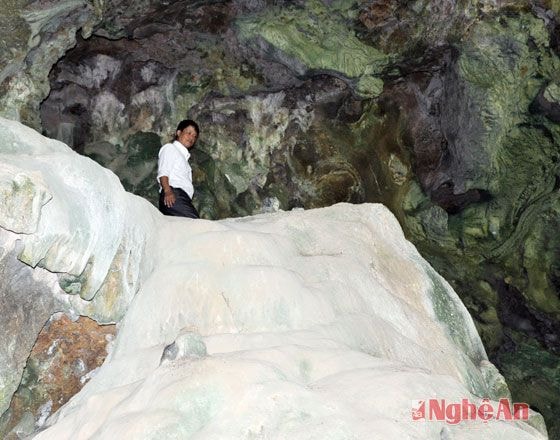 |
| "Stone Waterfall" in Tham Nang Man (Yen Khe - Con Cuong) |
Compared to many other caves in Con Cuong in particular and Nghe An in general, Tham Tong conquers everyone with its extremely beautiful stalactite system, which can be considered a "natural wonder". Tham Tong has a wide ceiling, a fairly flat floor, and a cool stream flowing through, adding to its appeal. The deeper you go, the more niches there are, all of which are connected to each other and lead to the main door. According to locals, it takes 2-3 days to explore all of Tham Tong's niches. Tham Tong is also attractive because of its stone slabs with diverse shapes, some of which look like a splendid bed, a sturdy chair, a treasure chest, a glittering curtain... creating the appearance of a majestic and splendid palace.
Don Phuc commune alone has just discovered 4 relics, namely Lang Vi family church, Xieng communal house, Xop O temple and Quan Bang temple. These relics contain historical values of the family, village and land of the Thai people on the left bank of Lam river. These relics need to continue to be preserved, embellished and researched to contribute to the preservation of traditional cultural values, contributing to the socio-economic development of the locality.
Need to awaken potential
Apart from the recognized historical sites (Ma Nhai stele, Vi Van Khang’s house), the long-known scenic spots (Pu Mat National Park, Khe Kem waterfall, Nuoc Moc stream), the remaining relics and scenic spots are like “sleeping beauties in the forest”. That means the value of those relics and scenic spots has not been exploited and is not known to many people, including the people in the district. That shows that it has not received due attention.
Mr. Nguyen Hong Hien, an officer in charge of relics and landscapes of the Con Cuong District Cultural Center, is a person who regularly goes on field trips to learn about the lands in the area. He is also the one who discovered a number of sites with archaeological value such as Pha Phang Cave (Yen Khe) and Hoong Nang (Luc Da). Stemming from his passion and sense of responsibility for his work and his hometown's traditions, Mr. Hien took the trouble to record, edit films and write comments on a number of relics and landscapes with the hope of making them into extracurricular learning materials for schools. However, this wish was not accepted by local authorities and sectors due to the lack of funds to print and copy the documents.
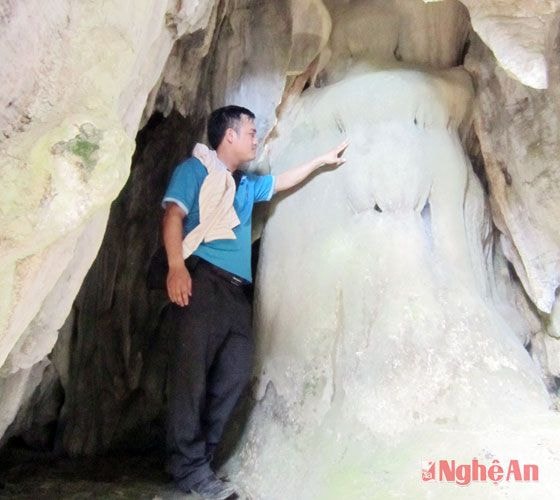 |
| Elephant-shaped stalactite in Pha Phang cave, Yen Khe |
Since 2013, the district has issued the Project “Preserving, maintaining and promoting the cultural identity of the Thai ethnic group”. The objective of the Project is to contribute to promoting socio-economic development. The content of the project focuses on preserving and restoring tangible and intangible cultural values to “retain” tourists. At the same time, this issue is also important in educating traditions, building a sense of pride and building a homeland for future generations.
Ms. Kha Thi Tim - Vice Chairman of the District People's Committee affirmed: "With the discovery of more relics and scenic spots in the area, bringing the total to 41, we will proceed to classify and grade them. From there, propose to build a plan to preserve, embellish and promote their values, contributing to promoting the socio-economic development of the locality".
PUBLIC SERVICE
| RELATED NEWS |
|---|

